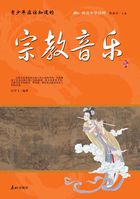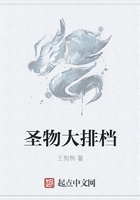He bought and studied Faraday's works.Presently came the first of his multitudinous inventions, an automatic vote recorder, for which he received a patent in 1868.This necessitated a trip to Washington, which he made on borrowed money, but he was unable to arouse any interest in the device."After the vote recorder," he says, "I invented a stock ticker, and started a ticker service in Boston; had thirty or forty subscribers and operated from a room over the Gold Exchange." This machine Edison attempted to sell in New York, but he returned to Boston without having succeeded.He then invented a duplex telegraph by which two messages might be sent simultaneously, but at a test the machine failed because of the stupidity of the assistant.
Penniless and in debt, Edison arrived again in New York in 1869.
But now fortune favored him.The Gold Indicator Company was a concern furnishing to its subscribers by telegraph the Stock Exchange prices of gold.The company's instrument was out of order.By a lucky chance Edison was on the spot to repair it, which he did successfully, and this led to his appointment as superintendent at a salary of three hundred dollars a month.When a change in the ownership of the company threw him out of the position he formed, with Franklin L.Pope, the partnership of Pope, Edison, and Company, the first firm of electrical engineers in the United States.
Not long afterwards Edison brought out the invention which set him on the high road to great achievement.This was the improved stock ticker, for which the Gold and Stock Telegraph Company paid him forty thousand dollars.It was much more than he had expected."I had made up my mind," he says, "that, taking into consideration the time and killing pace I was working at, Ishould be entitled to $5000, but could get along with $3000." The money, of course, was paid by check.Edison had never received a check before and he had to be told how to cash it.
Edison immediately set up a shop in Newark and threw himself into many and various activities.He remade the prevailing system of automatic telegraphy and introduced it into England.He experimented with submarine cables and worked out a system of quadruplex telegraphy by which one wire was made to do the work of four.These two inventions were bought by Jay Gould for his Atlantic and Pacific Telegraph Company.Gould paid for the quadruplex system thirty thousand dollars, but for the automatic telegraph he paid nothing.Gould presently acquired control of the Western Union; and, having thus removed competition from his path, "he then," says Edison, "repudiated his contract with the automatic telegraph people and they never received a cent for their wires or patents, and I lost three years of very hard labor.But I never had any grudge against him because he was so able in his line, and as long as my part was successful the money with me was a secondary consideration.When Gould got the Western Union I knew no further progress in telegraphy was possible, and I went into other lines."** Quoted in Dyer and Martin."Edison", vol.1, p.164.
In fact, however, the need of money forced Edison later on to resume his work for the Western Union Telegraph Company, both in telegraphy and telephony.His connection with the telephone is told in another volume of this series.* He invented a carbon transmitter and sold it to the Western Union for one hundred thousand dollars, payable in seventeen annual installments of six thousand dollars.He made a similar agreement for the same sum offered him for the patent of the electro-motograph.He did not realize that these installments were only simple interest upon the sums due him.These agreements are typical of Edison's commercial sense in the early years of his career as an inventor.
He worked only upon inventions for which there was a possible commercial demand and sold them for a trifle to get the money to meet the pay rolls of his different shops.Later the inventor learned wisdom and associated with himself keen business men to their common profit.
* Hendrick, "The Age of Big Business".
Edison set up his laboratories and factories at Menlo Park, New Jersey, in 1876, and it was there that he invented the phonograph, for which he received the first patent in 1878.It was there, too, that he began that wonderful series of experiments which gave to the world the incandescent lamp.He had noticed the growing importance of open arc lighting, but was convinced that his mission was to produce an electric lamp for use within doors.Forsaking for the moment his newborn phonograph, Edison applied himself in earnest to the problem of the lamp.His first search was for a durable filament which would burn in a vacuum.A series of experiments with platinum wire and with various refractory metals led to no satisfactory results.
Many other substances were tried, even human hair.Edison concluded that carbon of some sort was the solution rather than a metal.Almost coincidently, Swan, an Englishman, who had also been wrestling with this problem, came to the same conclusion.
Finally, one day in October, 1879, after fourteen months of hard work and the expenditure of forty thousand dollars, a carbonized cotton thread sealed in one of Edison's globes lasted forty hours."If it will burn forty hours now," said Edison, "I know Ican make it burn a hundred." And so he did.A better filament was needed.Edison found it in carbonized strips of bamboo.
Edison developed his own type of dynamo, the largest ever made up to that time, and, along with the Edison incandescent lamps, it was one of the wonders of the Paris Electrical Exposition of 1881.The installation in Europe and America of plants for service followed.Edison's first great central station, supplying power for three thousand lamps, was erected at Holborn Viaduct, London, in 1882, and in September of that year the Pearl Street Station in New York City, the first central station in America, was put into operation.















